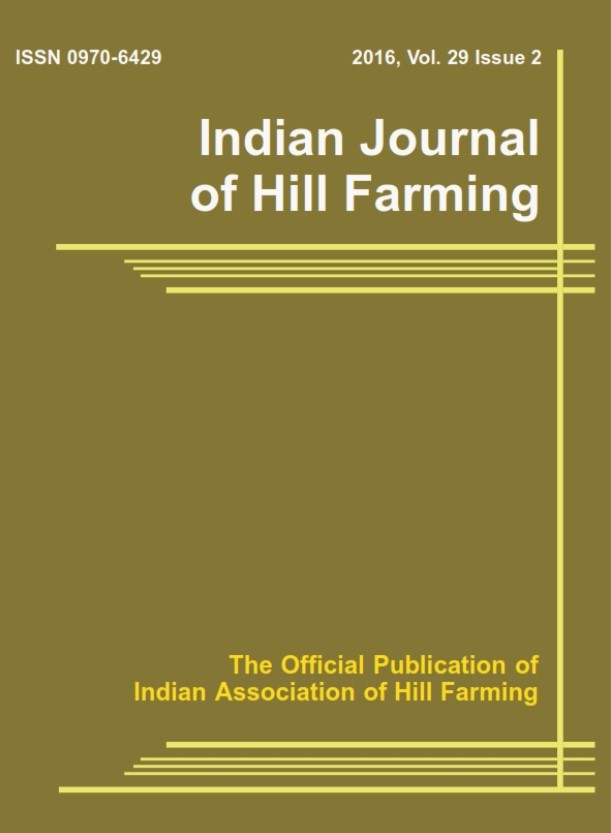Soil biological pools in traditional long-term rainfed rice ecosystems in hill agriculture
DOI:
https://doi.org/10.56678/Keywords:
: Hill rice, microbial biomass, mineralizable N, substrate induced respiration, enzyme activityAbstract
The soils of stable hill rice ecosystems viz. mono-cropped lowland and upland terraces in the present study were characterized in terms of biological pools of carbon (C), nitrogen (N) and phosphorus (P) and compared (P0.01, paired t-test) and studied the pairwise correlation for kharif and rabi season. Seasonal fluctuation in soil pH and different fractions of C, N and P viz. soil organic C (SOC), microbial biomass C, N, P (MB -C, -N, -P), dissolved organic C (DOC), basal respiration (BAS), substrate induced respiration (SIR), extractable organic N (EON), potentially mineralizable N (pMN), dehydrogenase (DHA) and phosphatase activity (PHA) were observed for different rice ecosystems. C and N components in soils of stable lowland and upland terrace rice ecosystems seem to be self-sustained, but the major limiting factor was availability of P. Moisture content were observed to be a critical variable that control the size and dynamics of biological pools of C, N and P and the interrelationships among the parameters in different rice ecosystems.Downloads
Published
2023-03-31
Issue
Section
Articles
License
Copyright (c) 2023 Christy B.K. Sangma, Samarendra Hazarika, Dwipendra Thakuria (Author)

This work is licensed under a Creative Commons Attribution-NonCommercial-NoDerivatives 4.0 International License.
How to Cite
Soil biological pools in traditional long-term rainfed rice ecosystems in hill agriculture . (2023). Indian Journal of Hill Farming, 36(01), 122-130. https://doi.org/10.56678/




